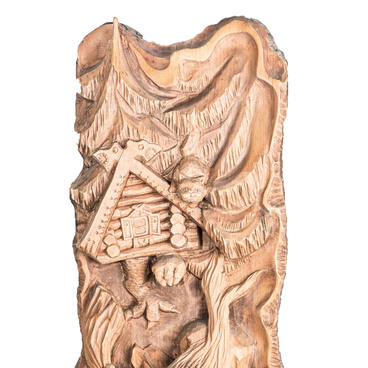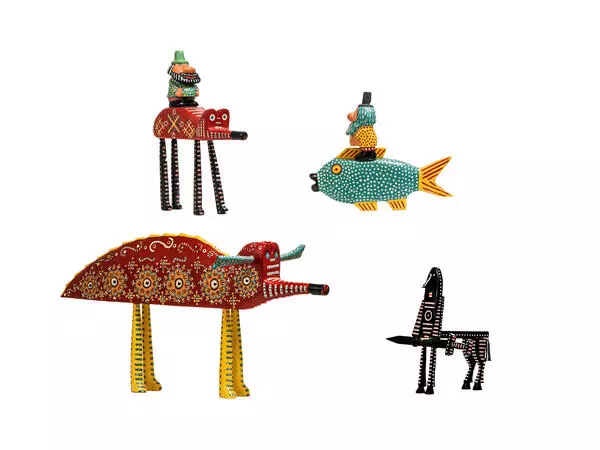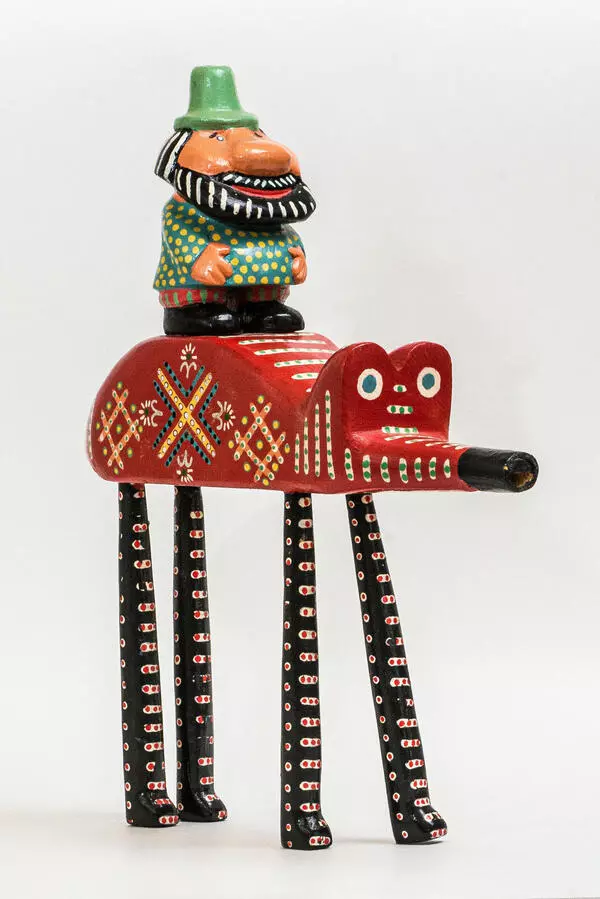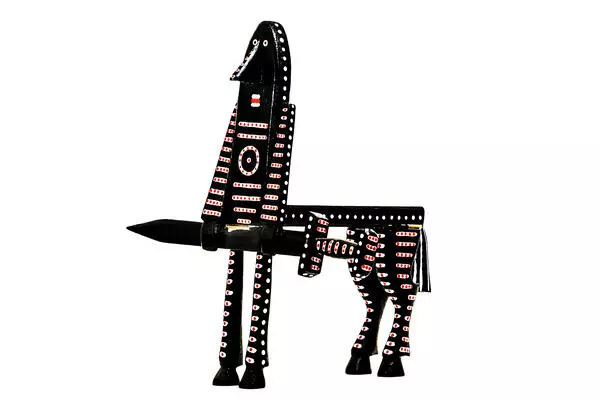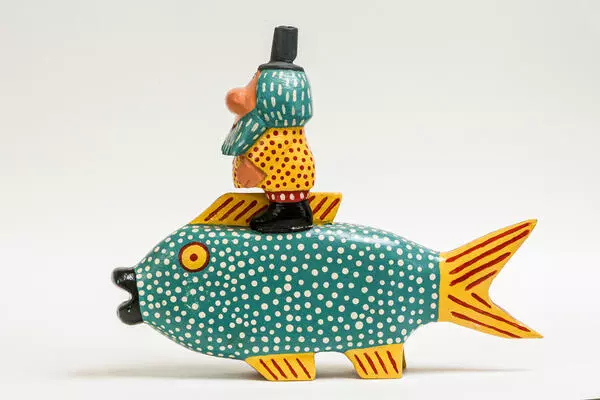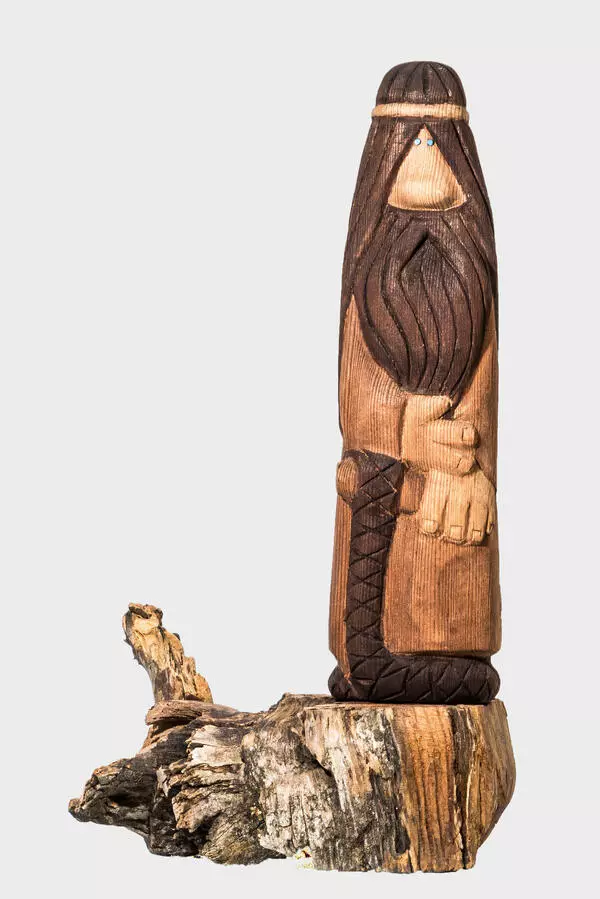Still in his youth, Nikolai Zykov became interested in molding from clay, which was mined in a ravine near the river Mahayevka. He created multifigure compositions and busts of historical figures: Alexander Pushkin, Leo Tolstoy, Karl Marx and others.
After finishing school, Zhukov spent almost a year studying at the Department of Stone-carving at the Ural College of Applied Arts and Design in Nizhny Tagil. Due to family circumstances, he had to give up his studies, and in 1972, he joined the army. Upon demobilization, Zykov entered the History Department of the Ural State University. In 1980, he got a job at the Beloyarsk Night School, later he worked as a resource specialist in the center for young naturalists and at the Beloyarsk Local Community Centre.
In the early 1980s, Nikolai Zykov started woodcarving, creating mythological and folklore characters: fairy-tale birds and fish, house and wood spirits.
There is a wooden sculpture of ‘Attila’ by Nikolai Zykov on exhibition at the Museum Center. It features the Hun leader who created a vast empire in 434–453, uniting under his rule the Germanic, Turkic and other tribes from the Rhine to the Volga River.
Atilla’s arms are spread out and resemble the position of a conqueror, ready to seize everything around. The face is depicted schematically: small dots for the eyes, the long snub nose, white stripes as the teeth, and a red line of the tongue between them. In Atilla`s figure, Zykov cut out a sword. It passes through the entire body of the figure and shows his nature and exploits.
The leader’s hands and feet are covered with white stripes decorated with dots. This visual technique sets the sculpture’s rhythm and focuses on the body that the master has intentionally left black. The absence of any pattern on it enhances the contrast of the contours of the sword. In this way, Zykov conveys not only the conqueror’s fearless and belligerent character, but also his inner emptiness.



